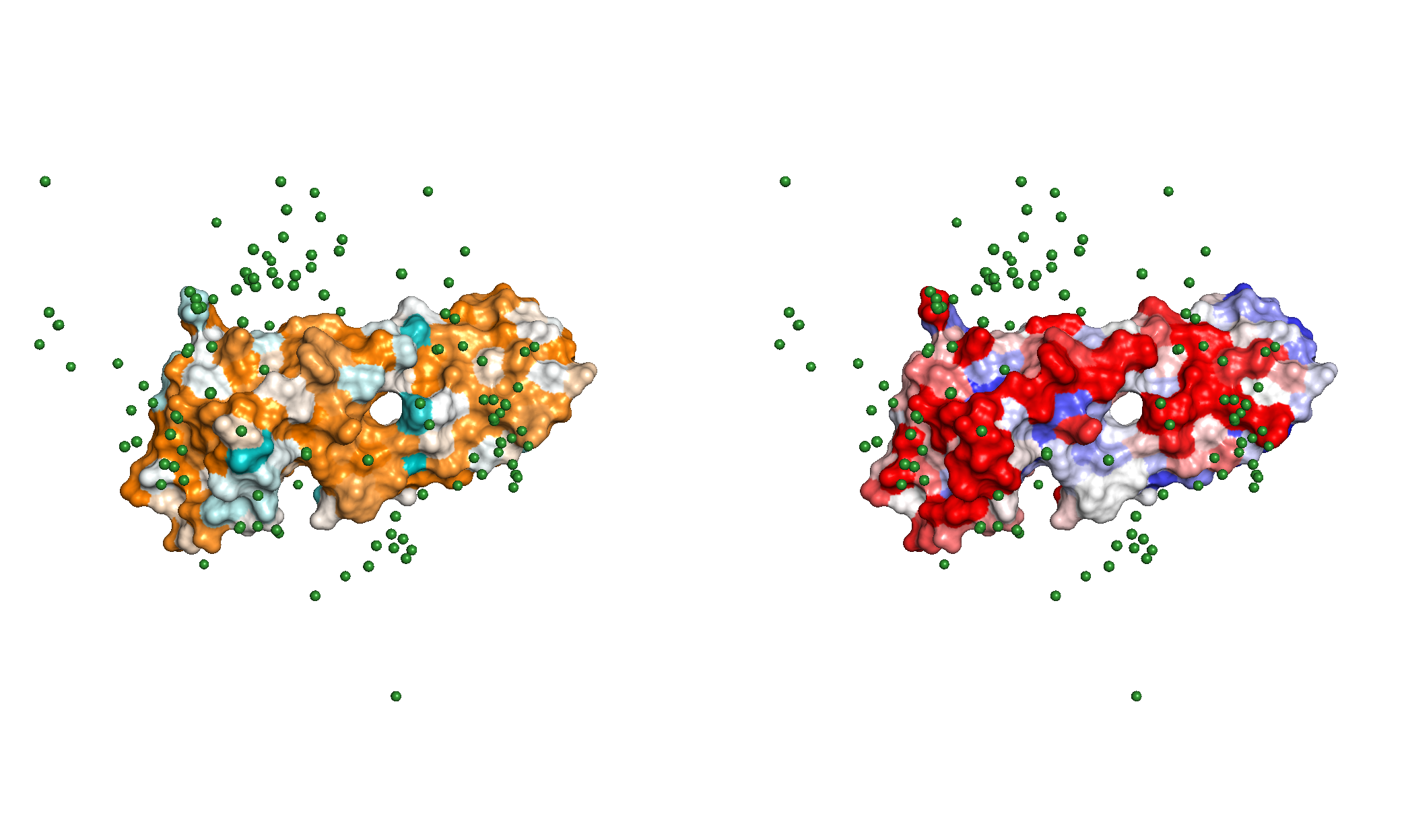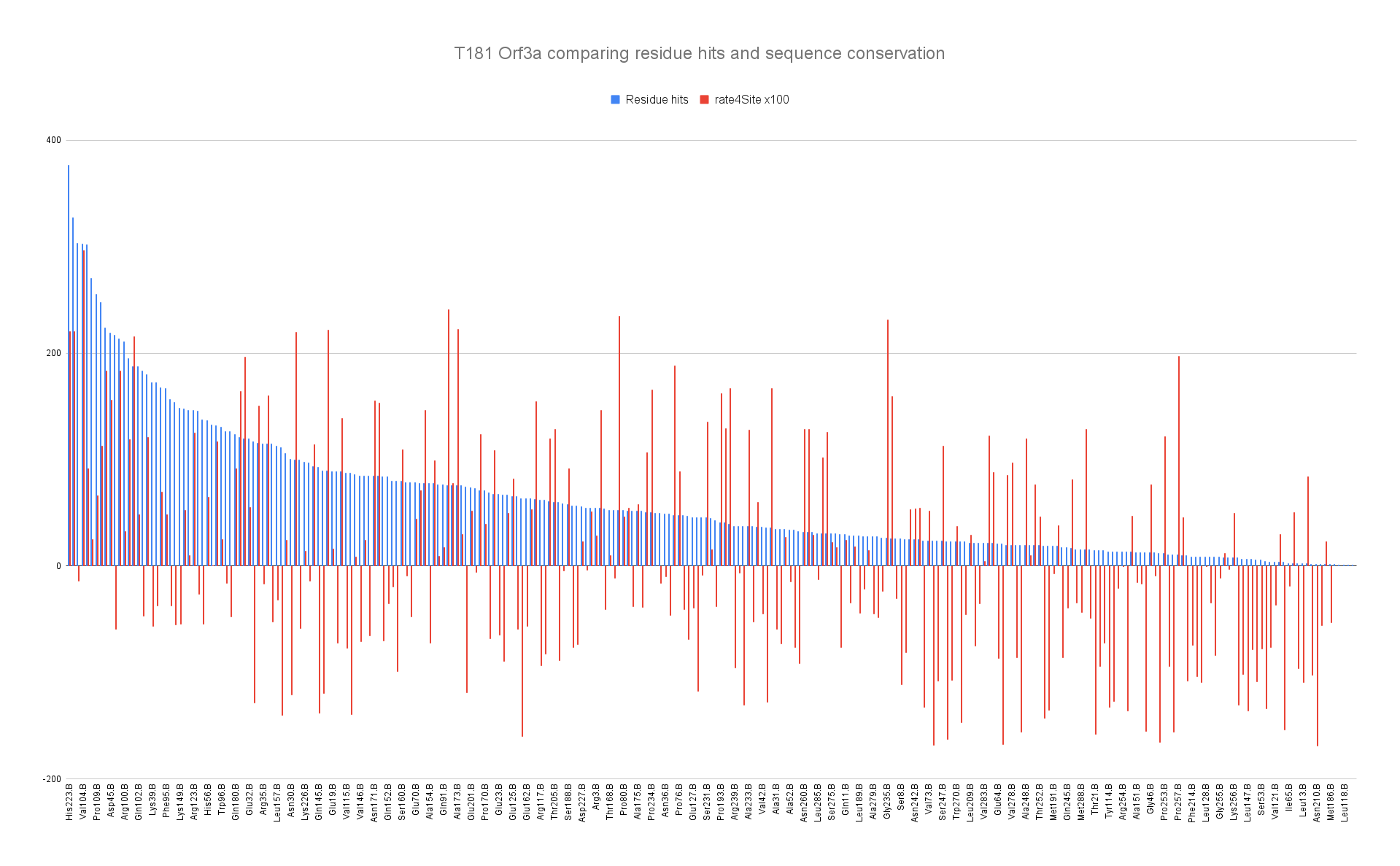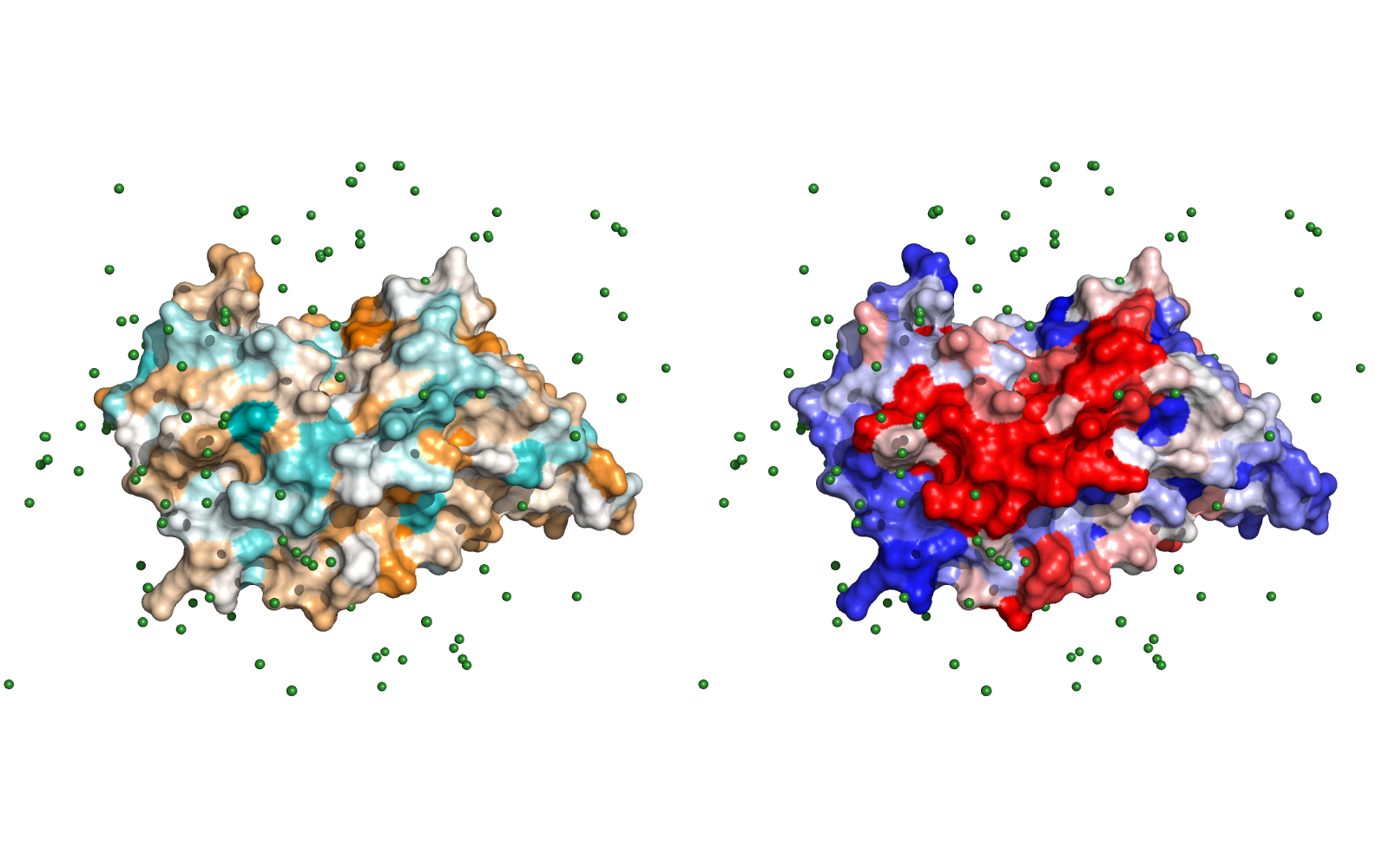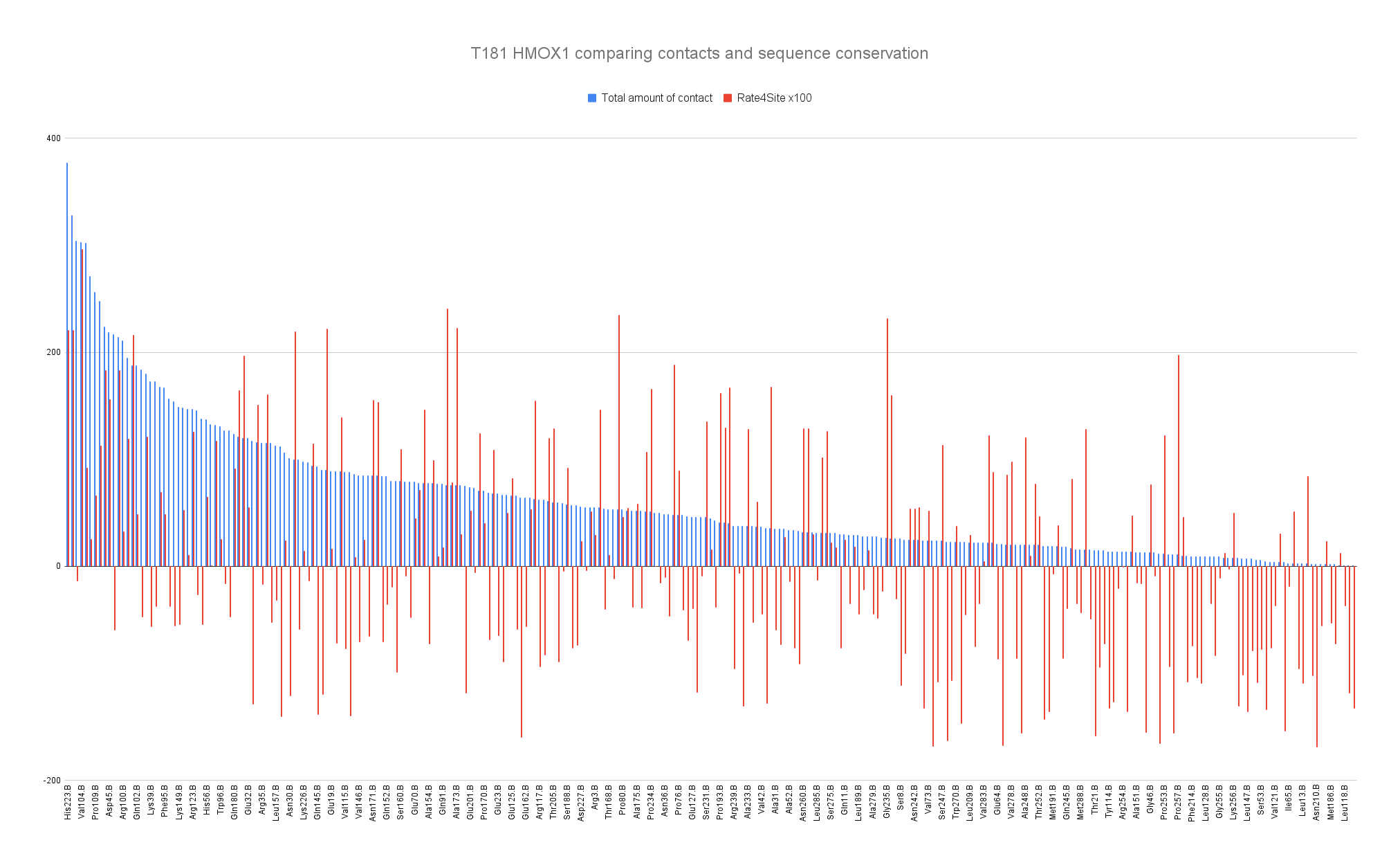CAPRI COVID-19 Round 51 - Target 181
This page provides information about the predictions and analyses of the CAPRI COVID Round 51, target T181.
Table of Contents
Methodology
The results presented are of the Scorer submissions of Target 181.
Contacts: Contacts between entities were determined using a 5 Å distance threshold. Clashes (contacts below 2.5 Å), if any, were ignored. Only inter-chain contacts were considered.
Only heteromeric contacts were kept. Then, for all models, we counted the number of contacts (defined as “contact hits”), the number of contacts a residue makes at the interface (defined as “residue hits”), and the number of different residues a residue interacts with (defined as “distinct contacts”).
Sequence conservation: Sequence conservation was calculated using Rate4Site. Here, a low score means good conservation.
Target 181
The set consists of 185 models.
All the downloadble files can be found at the end of this page.
Target description
| Type | Ligand | Receptor | ||
|---|---|---|---|---|
| Species | SARS-CoV-2 | Homo sapiens (Human) | ||
| Name | Orf3a | HMOX1 | ||
| Uniprot ID | P0DTC3 | P09601 | ||
| PDB Template | 6XDC | 1N3U | ||
| Description | Plays a role in virus egress via lysosomal trafficking (PubMed: 33157038, PubMed: 33422265). Forms homotetrameric ion channels (viroporin) localized at endosomes and lysosomes, that may induce deacidification of lysosomes thereby allowing safe virion egress through lysosomal trafficking (By similarity) (PubMed: 33157038, PubMed: 33422265). Also blocks formation of autolysosomes through binding and sequestering host TMUB1/HOPS on late endosomes. This prevents fusion of autophagosomes with lysosomes, disrupting autophagy and facilitating virus egress (PubMed: 33422265). |
Heme oxygenase cleaves the heme ring at the alpha methene bridge to form biliverdin. Biliverdin is subsequently converted to bilirubin by biliverdin reductase. Under physiological conditions, the activity of heme oxygenase is highest in the spleen, where senescent erythrocytes are sequestrated and destroyed. Exhibits cytoprotective effects since excess of free heme sensitizes cells to undergo apoptosis. |
Analysis of viral protein
Visualization

Surface representation of the ligand Orf3a protein sequence conservation (left), coloring from orange (conserved) to teal (not conserved) and of the residue hits (right), colored from red (high occurrence, capped at the 90th percentile for a better visualization) to blue (few occurrences). Green spheres are the center of mass of receptors for every model.
The PyMOL session where this image comes from can be downloaded here
Residue hit and conservation plot

Barplot representing the residue hits (blue) and the sequence conservation (red) with Rate4Site score where the lowest means the most conserved of the Orf3a residues.
Analysis of human protein
Visualization

Surface representation of the ligand HMOX1 protein sequence conservation (left), coloring from orange (conserved) to teal (not conserved) and of the residue hits (right), colored from red (high occurrence, capped at the 90th percentile for better visualization) to blue (few occurrences). Green spheres are the center of mass of receptors for every model.
The PyMOL session where this image comes from can be downloaded here
Residue hit and conservation plot

Barplot representing the residue hits (blue) and the sequence conservation (red) with Rate4Site score where the lowest means the most conserved of the HMOX1 residues.
Downloadable files
| Target | PyMOL sessions | Contact hits | CSV files for receptor and ligand |
|---|---|---|---|
| T181 | T181_ligand / T181_receptor | T181_contact-hits | T181_csv |
The description of the dowloadable files can be found here
For question, comment or feedback please contact Marc Lensink or Théo Mauri

